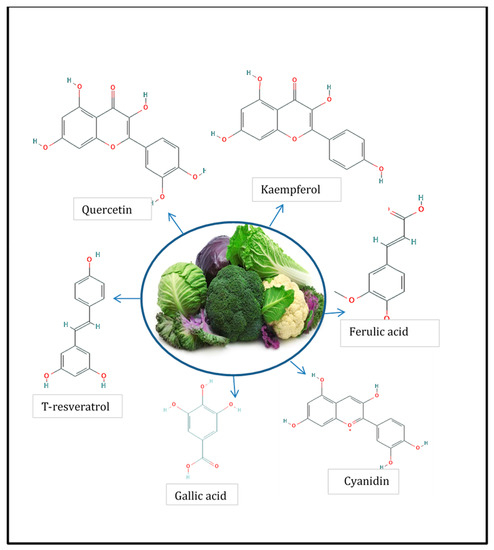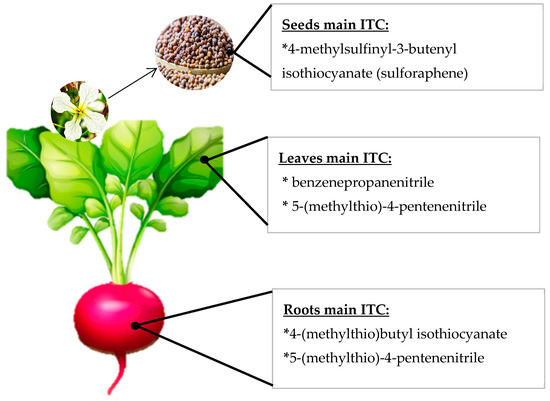Carotenoids are highly pigmented phytochemicals that possess a C40 backbone structure and are classified as symmetrical tetraterpenes. They are produced in many plants and microorganisms, and they can be yellow, orange, or red pigments. Some carotenoids such as β-carotene and α-carotene and β-cryptoxanthin have provitamin A activity since they act as precursors of vitamin A and, therefore, acquires an important function as a human health promoter. These compounds have been extensively studied for their health-enhancing properties and also for their biological functions as attractants to pollinators, as photoprotection pigments, and as light-harvesting pigments. Similarly, to phenolic compounds, the accumulation of carotenoids in cruciferous is regulated by the environment, tissue type, and developmental stage [
33,
34]. These groups of bioactive compounds have not been deeply characterized for
Brassicaceae species, but it has been reported that the predominant ones are β-carotene and luteolin, but variable amounts of zeaxanthin, cryptoxanthin, neoxanthin, and violaxanthin have also been detected [
35,
36,
37]. Other reports have found that carotenoid-containing cruciferous vegetables include kale (
Brassica oleracea L. convar. Acephala var. sabellica), brussels sprouts, broccoli, cauliflower, red cabbage, white cabbage, pakchoi (Brassica rapa subsp. chinensis), and kohlrabi (Brassica oleracea var. ganglyoides) [
38,
39]. Kale is considered the richest cruciferous source of this compound, surpassing cabbage in about 40 times [
35]. Among these, kale stands out for its high contents, not only within the cruciferous but also when compared to other vegetables, resulting in one of the main dietary source of carotenoids [
35,
40,
41]. Kale main carotenoids have been proposed to be zeaxantin and luteolin [
40] but important differences were found among several kale cultivars [
42]. Carotenoid profile among
Brassicaceae species varies greatly; for example, broccoli contains mainly β-carotene and luteolin [
43], cabbage contains mainly luteolin, followed by β-carotene, zeaxantin, and α-carotene [
44].


